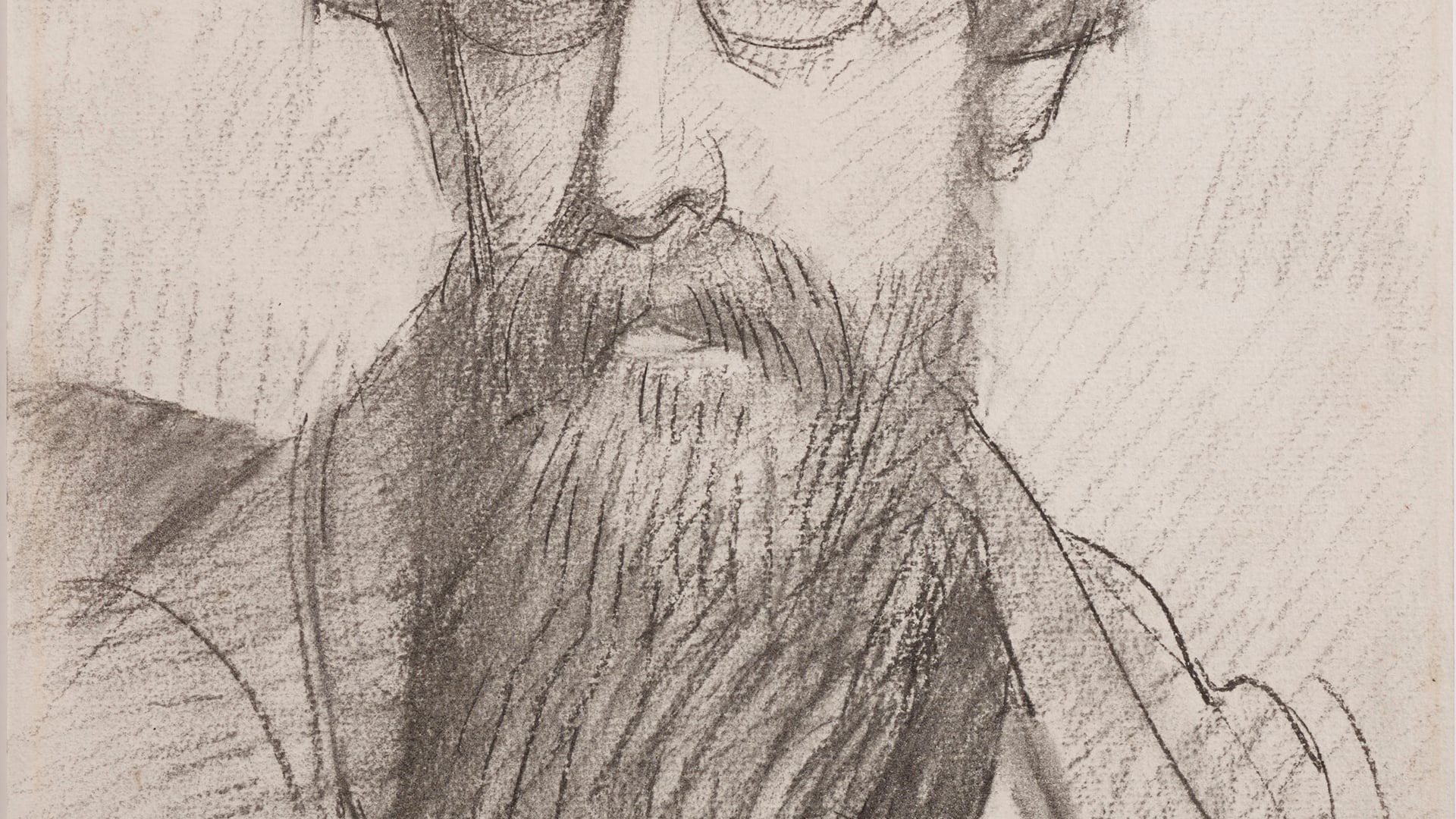

Private Collection, Oxford
Sale, Christie's London, 11th March 1994, lot 109, where acquired by
David Bowie
Sale, Christie's London, 11th March 1994, lot 109, where acquired by
David Bowie
Giles Lytton Strachey (1880-1932) is a biographer and critic who established a reputation with his book Eminent Victorians published in 1918. He was a core member of the so-called Bloomsbury set, which included the writer Virginia Woolf and the painters Roger Fry, Vanessa Bell and Duncan Grant. Strachey first sat for Lamb in 1908 and the artist wrote to him: ‘I should very much like to make a more adequate presentation of you than that sketch. Your posing is exemplary’[1]. By the time the present work was drawn in 1913, Lamb had brought Strachey to meet the great bohemian artist of the period Augustus John, who had inspired him to wear an earring and grow his hair and beard longer. Strachey wrote to his mother on 9th May 1911: ‘The chief news is that I have grown a beard! Its colour is very much admired, and it is generally considered extremely effective, though some ill-bred persons have been observed to laugh. It is a red-brown of the most approved tint, and makes me look like a French decadent poet - or something equally distinguished…’[2]
The drawing captures Strachey at his most pensive, a masterful handling of charcoal sculpting his features on paper. The compositional arrangement is clearly related to Lamb’s large painting of Strachey (1914, Tate, London) undoubtedly his greatest portrait. Strachey once said that he was unable to lift a match before breakfast and the painting shows him in a typically languid pose.
Born in Australia, Lamb was brought up in Manchester. He then moved to London where he briefly attended the Chelsea School of Art and the Rossetti Studios in Flood Street. He spent time in Paris and Brittany and some of his works reflects the influence of Gauguin. His paintings were included in the Second Post-Impressionist exhibition held at the Grafton Galleries, London in 1912. He was appointed an official War Artist at the time of World War I and then again during World War II.
David Bowie’s collection of 20th century British art encompassed Harold Gilman’s Interior (Mrs Mounter), painted during the First World War, works by Damien Hirst from the 1990s as well as by David Bomberg, Henry Moore, Graham Sutherland, Eduardo Paolozzi, Patrick Caulfield, Frank Auerbach and Leon Kossoff.
[1] quoted in Henry Lamb (exh. cat.), Manchester City Art Gallery, 1984, p. 38
[2] quoted in Paul Levy (ed.), The Letters of Lytton Strachey, London, 2005
The drawing captures Strachey at his most pensive, a masterful handling of charcoal sculpting his features on paper. The compositional arrangement is clearly related to Lamb’s large painting of Strachey (1914, Tate, London) undoubtedly his greatest portrait. Strachey once said that he was unable to lift a match before breakfast and the painting shows him in a typically languid pose.
Born in Australia, Lamb was brought up in Manchester. He then moved to London where he briefly attended the Chelsea School of Art and the Rossetti Studios in Flood Street. He spent time in Paris and Brittany and some of his works reflects the influence of Gauguin. His paintings were included in the Second Post-Impressionist exhibition held at the Grafton Galleries, London in 1912. He was appointed an official War Artist at the time of World War I and then again during World War II.
David Bowie’s collection of 20th century British art encompassed Harold Gilman’s Interior (Mrs Mounter), painted during the First World War, works by Damien Hirst from the 1990s as well as by David Bomberg, Henry Moore, Graham Sutherland, Eduardo Paolozzi, Patrick Caulfield, Frank Auerbach and Leon Kossoff.
[1] quoted in Henry Lamb (exh. cat.), Manchester City Art Gallery, 1984, p. 38
[2] quoted in Paul Levy (ed.), The Letters of Lytton Strachey, London, 2005